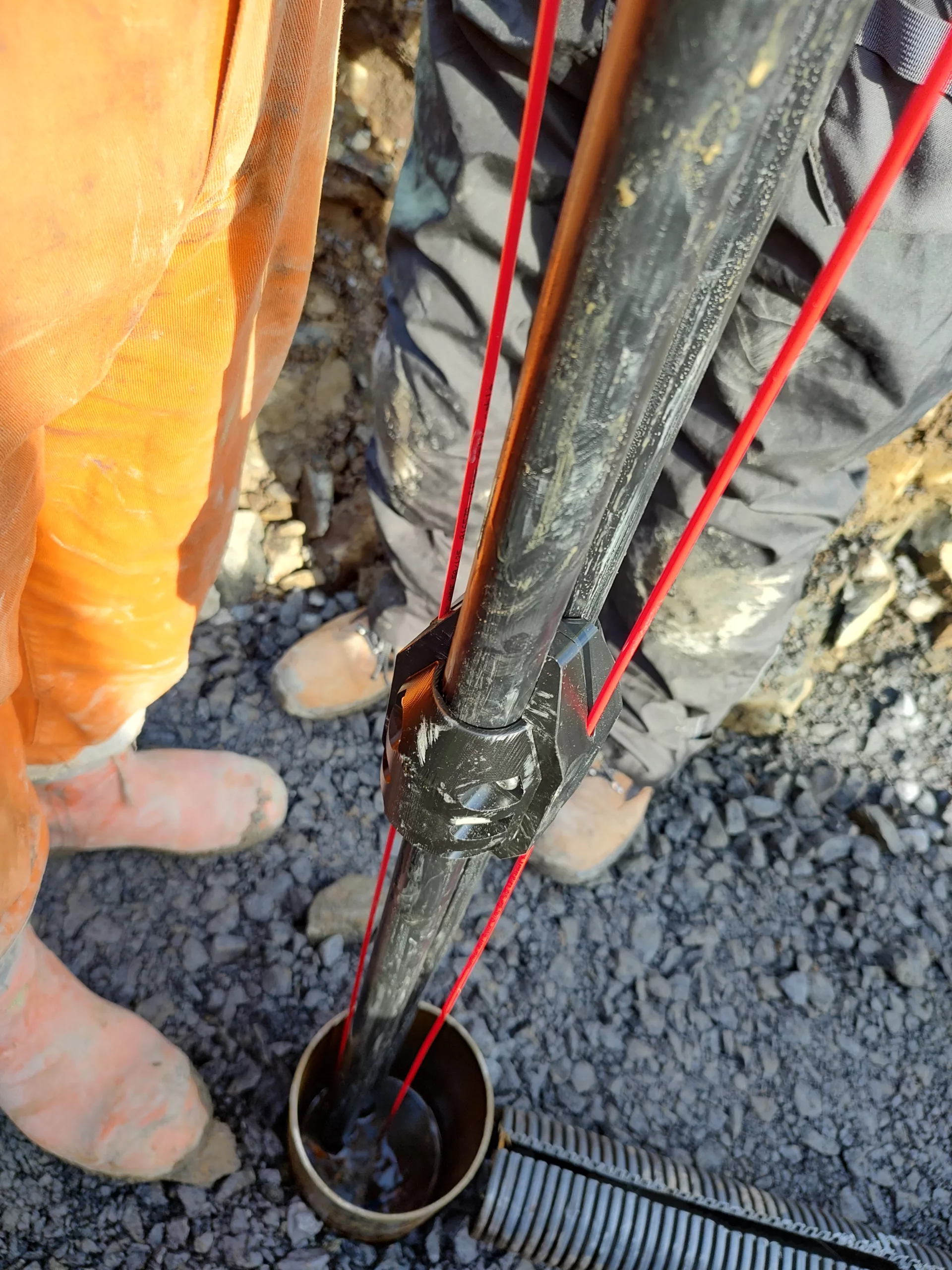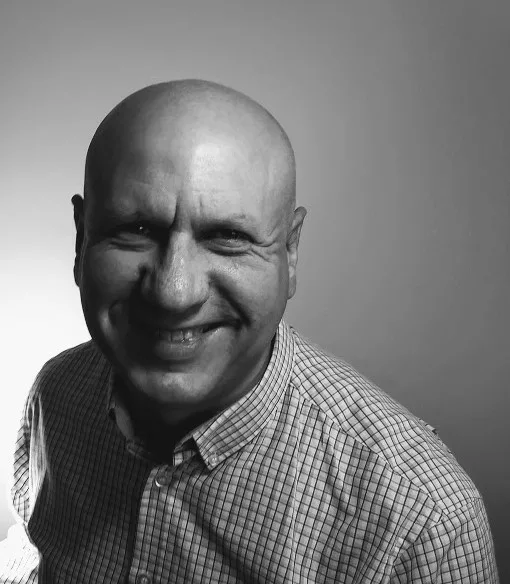
In 2021 as part of the European Green Deal, the European Commission put ‘Fit for 55’ into action – a set of policy proposals aimed at implementing SDGs (sustainable development goals). To reduce gas emissions by at least 55% by 2030, the ‘Fit for 55’ package calls for a doubling of heat pump roll-out rates in Europe. This means the installation of at least 10 million additional heat pumps by 2027, alongside the phase-out of stand-alone boilers by 2029 and the deployment of 30 million+ heat pumps by 2030. Researchers at University of Galway have taken this opportunity to develop a research-led, ground–source heat pump infrastructure – a living laboratory for teaching and experimentation that will inform policy and support Ireland’s decarbonisation journey.
Cois Coiribe: How did the opportunity to develop a geothermal heat pump system for the campus swimming pool first come about?
Luis Miguel Blanes Restoy : GEOFIT started as a European Union Horizon 2020 financed project. The University of Galway is part of a winning consortium formed by universities, heat pump manufacturers, technology providers and leading research institutions with the aim of testing and developing innovative solutions to facilitate ground source heat pump projects all over Europe. We provide one of the project pilots and the initial idea was to experiment with the swimming pool as ideally suited for heat pumps, providing a stable baseload, and acting as a big heat buffer. In collaboration with other institutions across the island of Ireland and Europe, this pilot will provide a model for geothermal projects in the future that are much larger in scale.
CC: How does the GEOFIT system work?
LMBR: Heat pumps work by moving low-grade heat stored in the air, water and ground, and delivering it as a high-grade heat to a point of consumption, whether this is a radiator at your house, a big buffer tank or an industrial process using heat. The GEOFIT project uses a closed loop system to collect heat from 18 boreholes (each 150m deep) drilled into the bedrock. The heat extracted is boosted by the heat pumps and feeds a district pipe network connecting the University swimming pool.
The technology inside the heat pump, the vapour compression cycle, is already well known. A more difficult task is calculating how much you can extract from the ground, what the relevant variables are when designing the system and how to optimise the technology to maximise long-term usage of the natural resources. Our pilot will explore the long-term drift in temperatures on the ground using a fibre-optic, distributed temperature-sensing (DTS) system. We will use this pilot to test simulation techniques to optimise the operation of different resources (air-ground), to better characterise the load-unload cycles and maximise efficiency.

CC: Can you give us a sense of the scale of this project and collaborations involved?
LMBR: While this is a medium-scale installation sufficient to heat the nearby swimming pool, the experimentation offered by the project will provide evidence for larger installations, and perhaps even a campus heating network. With a project of this complexity, planning and design has its challenges. As engineers, we are used to complex coordination and interdisciplinary projects involving Mechanical, Electrical and Civil disciplines. But in this case, you need to add the hydrogeologist, ground source specialists, specialised manufacturers, data scientists and IoT technologists. We had also Geological Survey Ireland involved in the geology characterisation and sensor specialists giving appropriate guidance on the monitoring framework. Having a range of experts in one room; that’s collaboration at its best.
CC: Why does this pilot site mark a breakthrough for sustainability on the island of Ireland?
LMBR: The pilot has been a springboard for collaborations in Ireland and internationally. For the first time, we will be capable of measuring different indicators in real time and provide a medium-scale prototype. The industry is pushing innovations and requesting a “Heat Pump Accelerator” to align policy, industry and skills training for a long-term stable scenario that drives down expenses. GEOFIT provides a small contribution that will assist with much larger projects. We’ve gotten lots of interest from other public institutions such as schools and the health sector, which are trying to mirror and learn from our experience to navigate the uncertain aspects of geothermal projects.
CC: We know that GEOFIT plays a significant role in the University’s plans to fully decarbonise the campus by 2050; what is at stake in the success of this project?
LMBR: The University sees this project not only as part of the sustainability strategy, but also as a means of attracting new students and funding for research projects. One role of universities is to provide evidence-based research that can help reduce or explain uncertainty in emerging technologies. We are committed to communicating research outcomes to the public, not only by obligation as publicly funded research, because being open and transparent can only assist in the adoption of new approaches and ideas. The living laboratory plays a key role in this commitment – offering students the opportunity to learn by doing – something that will stand to them throughout their careers.
CC: What are some of the challenges you have faced thus far?
LMBR: Given the complexity of the pilot, we have faced some significant challenges from the start. Assembling the right design team and advisors, using specialised software and deciding among many options on the hydronic design for the experimental setup was the first step. Then, COVID-19 and the Ukraine war pushed up prices so much so that the project was under threat. After that, the impacts on the supply chain presented difficulties in sourcing everything from electronic components to plastic piping material. Some of the innovations were designed during the construction stage. This kind of set-up using these specific materials was a first-time for all of us.
CC: You have described the site as a “field-scale living laboratory” that generates data in real-time. What does this hands-on environment offer the University?
LMBR: The pilot data will be used actively in our engineering modules as a teaching tool. We hope that this is an opportunity to introduce a hands-on laboratory to our future engineers and contribute to the training of skilled professionals in the sector. We have a number of MSc students working on GEOFIT, and we will continue to support teaching and experimentation during the operation of the pilot.
CC: How have students responded to this living laboratory? Are they surprised by the physical labour involved?
LMBR: The civil works at the Alice Perry Lawn is obviously the most visible and impactful part of the project. This has sparked curiosity among students, staff and members of the public; there has been a lot of interest in our journey towards energy independence and emissions reduction. We had the drillers talk to some of the undergraduate students to explain the drilling process, and to talk about the practical side of getting a rig on a site, and completing the work.
The site itself makes the project very visible and very real to students. They have seen the site start as a green field, fenced in and stripped back, with drill rigs, trucks and diggers installing equipment – and they have seen the site being covered back up, reseeded and replanted. One aspect that is really clear is the importance of good communication and explaining what is going on – to students and the public – and that the overall aim (to get a geothermal project up and running) does involve ground and site work. In some sense, we have learned that heat pumps and geothermal in general are not well understood. I guess this is just part of our time, and for us, a reminder to take a leading role driving impactful change and innovation based on sound evidence.
Learn more about GEOFIT here.
Disclaimer: This project has received funding from the European Union’s H2020 programme under Grant Agreement No. 792210.

Profiles

Luis M. Blanes is an Architect (2001) trained at ETSA University of Seville (Spain), IUAV (Venice, Italy) and Cardiff University (United Kingdom). His professional career started in 2001 working as an Architect for Industrial Group Leche Pascual S.A. where he earned a wide understanding of the Design-Procurement-Construction-Operation cycle acting from the client side perspective. In 2005 he joined engineering group Tecnicas Reunidas S.A. and worked within the Infrastructure and Environmental division. He is currently a Researcher in the College of Science and Engineering, University of Galway.